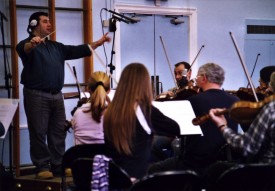Recently I was hired by Astute Graphics to direct an advert-like promotional film for the launch of their new product, an Adobe Illustrator plug-in called WidthScribe. Here is the result:

It was a really fun and creative project, working with a great bunch of people including gaffer and GlideCam operator Colin Smith, designer and make-up artist Sophie Black, actress Laura Markham, and Nick van der Walle from Astute Graphics.
I have noticed a recent trend in adverts for a milky, low-contrast look, and I felt this would be an appropriate project for such a look. I knew that we would be featuring crisp, contrasty vector graphics throughout the film, so it made sense to counterpoint these with live action that was organic, soft and diffuse.
In preparation I set up a picture profile on my Canon 600D with minimum contrast and sharpness, and slightly reduced colour saturation.
On set the front light came from softboxes, reflectors and natural bounce, though always with a strong backlight to prevent the image from looking completely flat. The backlight also produced lens flare which further reduced the contrast of the image by lifting the shadows. In fact, I decided that almost every shot should have a lens flare, to enhance that organic look. Often this meant that Col would stand next to the camera and shine a 100W reporter light into the lens.

Smoke was used in the kitchen scene, again to lift the shadows and diffuse the light. By a stroke of luck, the direct, wintery sunlight I faked in this scene with a 1,000W Arrilite pretending to be the sun was replicated almost exactly by the real sun when we filmed the office scene the following day.
In a future post I’ll reveal the secrets of the driving shots.
